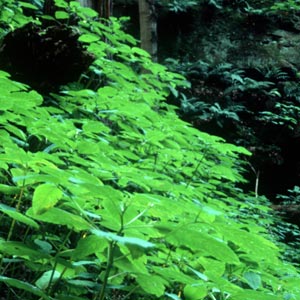Main Content
Article
Stinging Nettles

Stinging Nettles
Stinging nettles are easily distinguished plants with a memorable sting. This plant, which can easily reach 3 feet in height, has fine hairs on the stems and leaves. Each hair is like a hollow needle filled with formic acid, the same chemical in ant saliva that causes pain to humans when bitten. This acid can redden the skin and cause a non-spreading rash that can last up to 24 hours.
Remedies for this sting include a plant that often grows next to it called jewelweed. Applying the crushed stem of this plant to the affected area soothes the irritated skin. Another method for alleviating the pain is to apply a mixture of baking soda and water. Rubbing human saliva on the stung area can lessen the pain as well.
The more interesting aspect of this plant, despite the painful affect it is known for, is its use as a remedy for many ailments. It was, at one time in history, used as an antispasmodic, a treatment for asthma and a hair growth stimulant. Some have, and still do, use it as a cure for swollen joints from arthritis. They hit the swollen area with the stinging nettle plant. In Germany, the Federal Institute for Drugs and Medical devices has approved the use of stinging nettles as a cure for urinary tract infections and kidney stones. It is also believed to build energy and restore flexibility to blood vessels for women going through menopause.
Nettles have also served other purposes. One such use is as a food source. They can be used in teas or soups, or simply cooked and eaten like other green vegetables. Native Americans relied on this plant as a means of keeping themselves awake while staying up late to keep guard and used the fibers, which are stronger than cotton, as rope-making material. There’s more to this plant than meets the eye, or skin, in this case.
